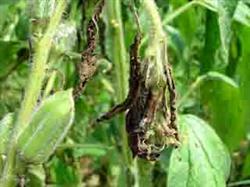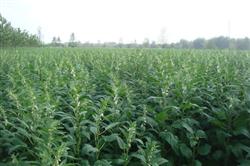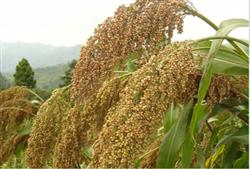How to control white sesame bacterial wilt?

How to prevent and cure bacterial wilt of white sesame? Please guide that bacterial wilt of white sesame is very common, which has a serious impact on its yield and quality. its incidence characteristics and control techniques are as follows: first, the disease condition of bacterial wilt of white sesame is mainly caused by excessive soil moisture in the field. the pathogen overwintered in the soil with the remains of the diseased plant and spread by running water or agricultural operations. The condition of continuous cropping field is more serious. The peak of the disease is usually in the hot July to August. After the rainstorm, the temperature rises suddenly, and the disease is easy to occur and epidemic. Second, the harmful symptoms of white sesame bacterial wilt, a bacterial disease, the outer rhizome of the damaged plant showed dark brown stripes, the internal vascular bundles were brown, bacteria overflowed and exuded, and turned into bright black particles after drying. At the initial stage of the disease, the diseased plant seemed to be lack of water, wilted during the day and returned to normal at night. A few days later, the leaves wilted sharply from the top down, the old leaves hung, and then the whole plant died. After the onset of the disease, the veins of the leaves show dark green spots, sometimes crisscross, forming a network, facing the light perspective, and its center is oily. After the capsule was damaged, it showed waterlogged disease spot, and gradually turned into dark brown stripes of different thickness, which made the diseased capsule thin and shrunken, thus making the seed thin and lost its ability to germinate. 3. Control techniques (1) Agricultural control 1. Select disease-resistant varieties and rotate them with non-Solanaceae and non-legume crops for three years. 2. White sesame is not resistant to water stains. During its growth and development, if it encounters heavy rain, rainstorm and stagnant water in the field, it should be eliminated in time so that there is no stagnant water in the field. 3. Increase the application of organic fertilizer, especially potash fertilizer. 4. Remove, destroy or bury the diseased plants in time. (2) Chemical control 1. Disinfect the acupoint with 1 part of lime water and 15 parts of lime powder. 2. Before sowing, soil treatment with chlorothalonil has a better preventive effect, or at the initial stage of the disease, spray with 50% carbendazim wettable powder 800-1000 times or 50% cresol guaiacol 50 ml plus 50% carbendazim 100 grams per mu, spray 50 kg of water. Click to get more sesame planting techniques click to get more food crop planting techniques
- Prev

How to grow white sesame seeds for high yield?
How to grow white sesame seeds for high yield? Please give guidance to plant white sesame to high yield can refer to the following planting methods: First, the selection of improved white sesame production should choose high yield and good quality, strong resistance, pure white seed Yuzhi No. 4, Yuzhi No. 8, Yuzhi No. 10 and other varieties. In order to overcome the low yield of sesame continuous cropping,...
- Next

How to plant pearl sorghum for high yield
How can pearl sorghum be planted with high yield? Please guide pearl sorghum to be planted with reference to the following methods: 1. Soil preparation: one plough and one rake for ripe land, two ploughs and two rakes for wasteland (raw land), rake the soil into pieces during the day to meet the requirements of growing corn, paddy fields or plots with too much water should not be planted. 2. Apply sufficient base fertilizer: in.
Related
- The first cup of black tea in spring, the flavor and history of tea gardens in Kenya, Africa
- The computer can not only choose potatoes, but also grow tea rice. AI will grow winter oolong tea champion.
- It is not only the inflated tea bitten by insects, but also engraved with the four seasons tea in Beipu.
- The Oriental Beauty Tea Festival in Zhuxian County takes the stage at the weekend to experience the plus-size feast of oil tea.
- & quot; Oriental Beauty Tea & Exploration of Emei in Hsinchu, the hometown of quot;
- The new variety of strawberry "Tainong 1" dessert is the first choice with mellow aroma. Crimson gorgeous
- History of Tea in Taiwan: from Wild Inner Mountain to Export Tea Garden
- Two types of Taiwan Oriental Beauty Black Tea won the British three-Star Award for Childhood Tea Xiang Zhang Jiaqi changed from pilot to champion tea maker.
- Banana species and varieties: the planting history of Taiwan Xianren banana and dwarf banana is long, is banana disease resistant?
- Coffee planting Technology: Qianjie Coffee from Seedling to harvesting

